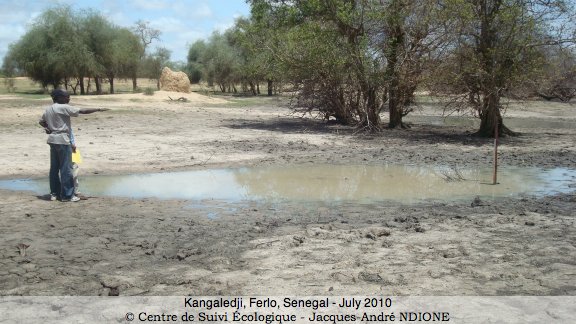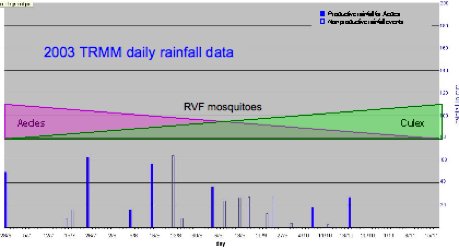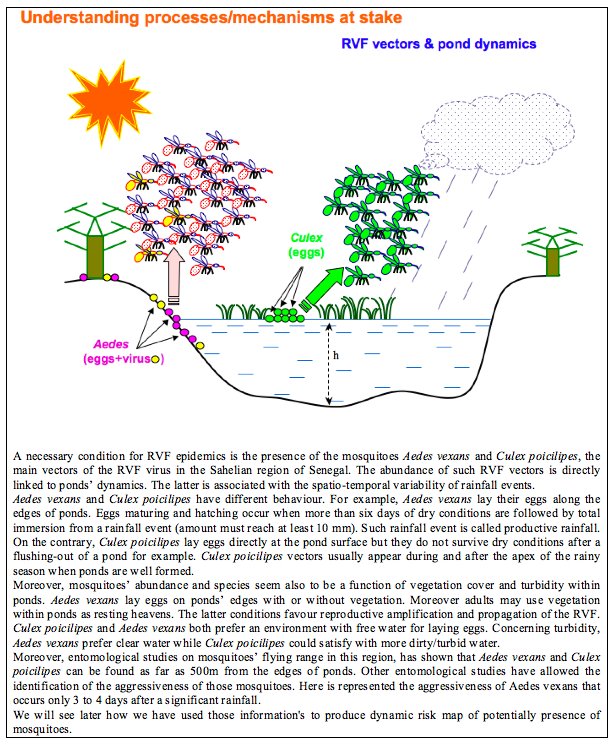
AdaptFVR project’ aim to study the climates change impacts on Senegal emerging Rift Valley Fever (RVF). This project also aim to study the required strategies for a better cattle management in Sahel.
The CNES remote epidemiology conceptual approach applied to the Rift Valley Fever in the Senegal Ferlo region during 2003 season allowed to produce cattle RVF exposure dynamic risk maps including as primary inputs the rain events, the vector (Aedes vexans and Culex poicilipes) density and the presence of hosts (cattle).
First objective of AdaptFVR is to validate the dynamic risk maps produced during the Senegal Ferlo region 2010 rainy season.
For so, a wide terrain campaign including entomologic measures and survey of cattle health is performed in sample cattle ranches.

A statistical analysis will allow to compare results obtain in these ranches and to the ones obtained by the model. Some socio-economical studies at Barkedji region will also allow to re-centre the study on local population needs and behaviour. The climate part of AdaptFVR aims to study the climate variability (from the seasonal to low frequencies) on pluviometry. The main input to elaborate risk map is the pluviometry and it’s spatial-temporal distribution. We should therefore be able to study the impact of climate on RVF vector presence risks.
The forecast of RVF vector exposed risk zone will allow to develop appropriate strategies for cattle management. The socio-economical study will allow to study the adaptation processes in cattle management due to the forecasted climate risk at several spatial-temporal scales.
The main objective is to prove how the risk maps, original an innovative product base among other on data and products of space based technology, can contribute to health practices included in a early warning system.

